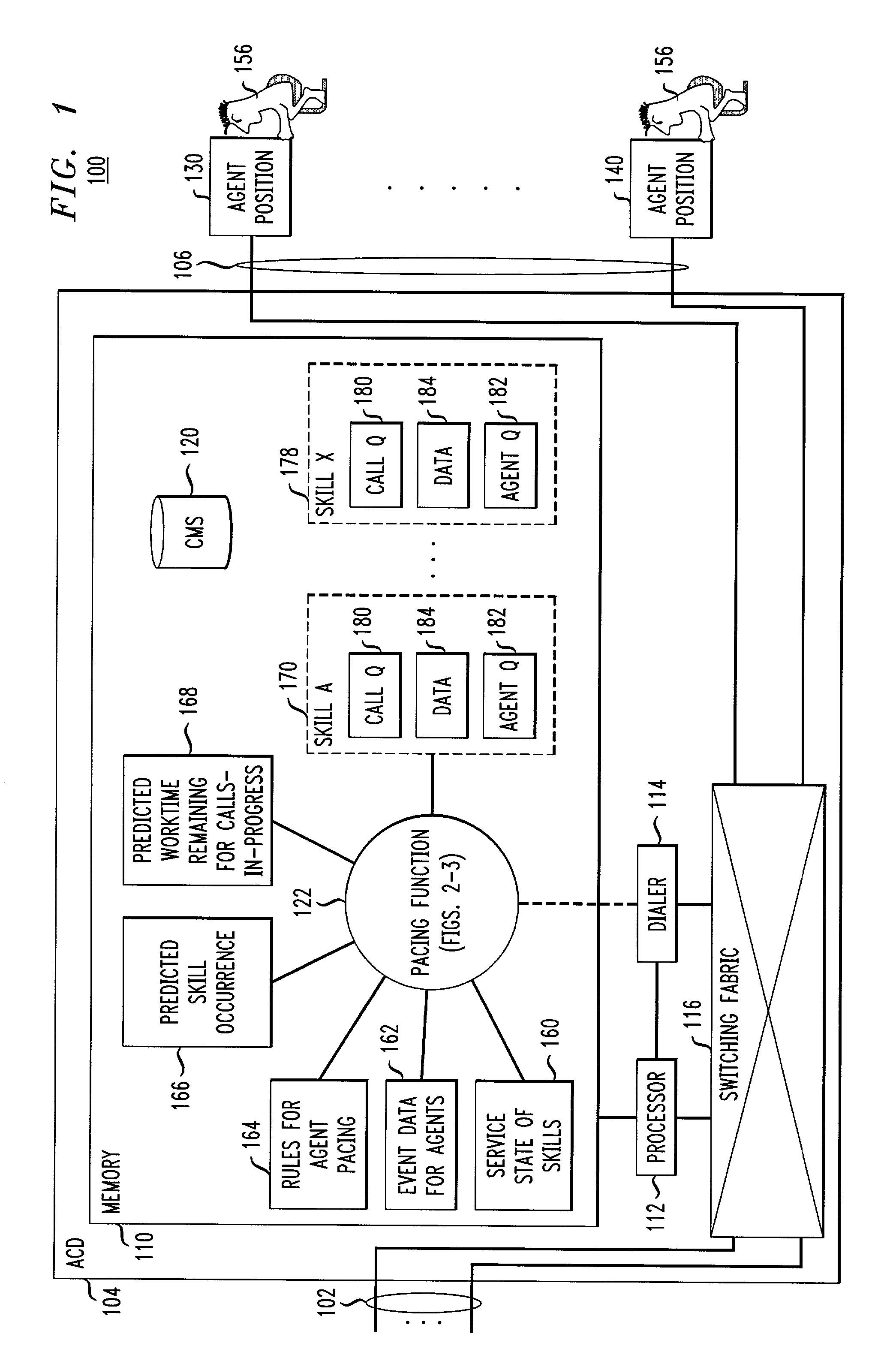Intelligent inbound/outbound communications blending
a communication blending and intelligent technology, applied in the field of real-time work centers, can solve problems such as difficult prediction, prone to errors in predictive algorithms, and inability to control the system, and achieve the effect of improving the pacing of additional tasks for resources and avoiding mistakes
- Summary
- Abstract
- Description
- Claims
- Application Information
AI Technical Summary
Benefits of technology
Problems solved by technology
Method used
Image
Examples
Embodiment Construction
[0012]Reference will now be made in detail to the illustrative embodiment of the invention, which is illustrated in the accompanying drawing. While the invention will be described in conjunction with the illustrative embodiment, it will be understood that it is not intended to limit the invention to this embodiment. On the contrary, the invention is intended to cover alternatives, modifications, and equivalents, which may be included within the invention as defined by the appended claims.
[0013]FIG. 1 shows an illustrative call center 100 for servicing inbound and outbound calls. The word “call” is used herein generically to mean any communication or request for expeditious service. Call center 100 comprises an automatic call distributor (ACD) 104 that interconnects agent positions 130–140 via calls with the outside world to which it is connected by communications trunks 102. ACD 104 includes a switching fabric 116 that selectively interconnects trunks 102 with communications lines 1...
PUM
 Login to View More
Login to View More Abstract
Description
Claims
Application Information
 Login to View More
Login to View More - R&D
- Intellectual Property
- Life Sciences
- Materials
- Tech Scout
- Unparalleled Data Quality
- Higher Quality Content
- 60% Fewer Hallucinations
Browse by: Latest US Patents, China's latest patents, Technical Efficacy Thesaurus, Application Domain, Technology Topic, Popular Technical Reports.
© 2025 PatSnap. All rights reserved.Legal|Privacy policy|Modern Slavery Act Transparency Statement|Sitemap|About US| Contact US: help@patsnap.com



